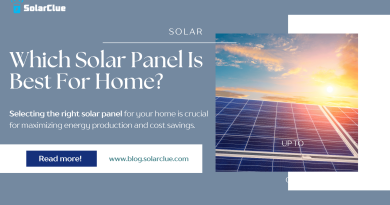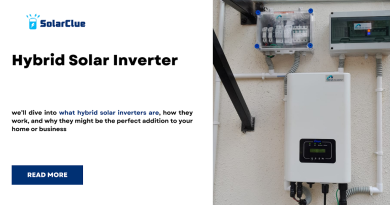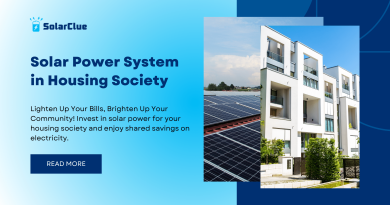Connecting an On-Grid Solar System: A Step-by-Step Guide
With the increasing demand for sustainable energy sources, many homeowners and businesses are turning to solar power as a viable option. One of the most common types of solar systems is an on-grid solar system, which allows users to generate electricity from the sun and feed it back into the grid. Connecting an on-grid solar system may seem like a complex process, but with the right knowledge and guidance, it can be a straightforward task. In this blog, we will provide you with a step-by-step guide on how to connect an on-grid solar system, enabling you to harness the power of the sun and save on your energy bills.
Table of Contents
Selecting the Right Components
Before diving into the process of connecting an on-grid solar system, it is crucial to ensure that you have the right components for the job. Here are the essential elements you will need:
1. Solar Panels: The heart of any solar system is the solar panels. These panels convert sunlight into electricity and come in various sizes and power ratings. Make sure to choose panels that are compatible with grid-tie systems.
2. Inverter: An inverter is responsible for converting the direct current (DC) generated by the solar panels into alternating current (AC) that is used in our homes and offices. Select an inverter that is designed for grid-tie systems and meets the power requirements of your solar system.
3. Mounting Structure: To ensure optimal exposure to sunlight, solar panels need to be mounted on a sturdy and secure structure. Depending on your installation site, you can choose from roof mounts, ground mounts, or pole mounts.
Evaluating Your Electrical System
Once you have gathered all the necessary components, it’s time to evaluate your existing electrical system to ensure compatibility with the on-grid solar system. Here are the steps to follow:
1. Electrical Inspection: Before connecting the solar system, it is essential to conduct an electrical inspection of your property. This inspection will identify any potential issues or required upgrades to ensure a safe and reliable connection.
2. Review Local Regulations: Different regions may have specific regulations and codes related to connecting solar systems to the grid. Research and familiarize yourself with local requirements to ensure compliance and avoid any legal issues.
3. Contact Utility Company: Reach out to your utility company to discuss your plans for connecting an on-grid solar system. They will provide you with information on interconnection policies, metering requirements, and any necessary paperwork for connection.
Installation Process
Now that you have completed the preliminary steps, let’s move on to the actual installation process of connecting your on-grid solar system:
1. Mounting Solar Panels: Install the mounting structure based on the location you have chosen, ensuring it is securely fixed. Next, attach the solar panels to the mounting structure, following the manufacturer’s instructions.
2. Wiring the Solar Panels: Connect the solar panels in series or parallel, depending on the specifications of your solar system. Use specialized solar cables and connectors to ensure safe and efficient connections.
3. Connecting to the Inverter: Place the inverter in a suitable location near your main electrical panel. Connect the DC output from the solar panels to the DC input on the inverter using appropriately sized DC cables.
4. Connecting to the Electrical Panel: Connect the AC output of the inverter to a dedicated breaker in your main electrical panel. This connection allows the solar energy to feed into the grid.
5. Metering and Monitoring: Install the necessary meters to accurately measure the energy generated by your solar system and the energy consumed from the grid. Some utility companies may require an additional meter for monitoring purposes.
Conclusion
By following the steps outlined in this guide, you can successfully connect an on-grid solar system and start harnessing the power of the sun. Remember to conduct thorough research, choose the right components, and adhere to local regulations and guidelines. Installing an on-grid solar system not only allows you to generate clean energy but also offers the opportunity to save on your energy bills and contribute to a sustainable future. So, take that first step towards a greener tomorrow and embrace the potential of solar power.
Ready to harness solar power? Dive into the guide on connecting an on-grid solar system with SolarClue®. Visit our website for expert advice and premium solutions to make your solar connection seamless and efficient.
Frequently Asked Questions
Essential components include solar panels, inverters, mounting structures, and a grid-tie connection.
Yes, on-grid solar systems are designed to seamlessly integrate with existing electrical systems.
While DIY is possible, professional installation ensures safety and optimal performance.
Installation time varies but typically takes a day or two, depending on system size.
Safety precautions include turning off power, using proper equipment, and following installation guidelines.
Absolutely, SolarClue® provides expert guidance and premium solutions for a hassle-free connection.
In many regions, there are incentives, tax credits, and rebates to encourage on-grid solar adoption.
SolarClue® incorporates advanced technologies and quality products for optimal on-grid solar performance.
No, on-grid systems are designed to shut down during outages to protect utility workers.
Regular checks and occasional cleaning ensure the efficiency and longevity of on-grid solar systems.




